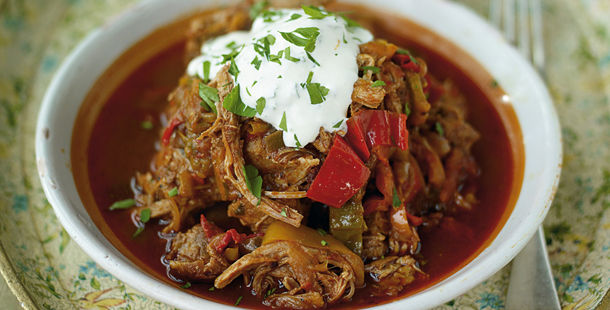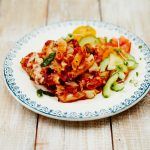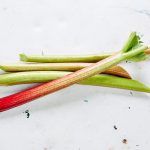By Reka Varga
So let’s try and describe the food of Hungary in one word; let’s go for diverse. Not only because of its historical background is the food so varied but in no small part was Hungarian cuisine was influenced by Italian cuisine during the Renaissance, ancient Turkish cuisine during the Ottoman era, Austrian and German cuisine under the Austro-Hungarian Empire – forever imparting a love of good food on the nation’s tables. Richness and spiciness are the main characteristics of the food of my mother country, but I’ll try and put the flavours in a nutshell for you.
Soups play an essential role in the Hungarian kitchen with a wide range of different varieties: famous chilled fruit soups like apricot soup, sour-cherry soup, which can be served as a starter; the rich one-pot soups can be eaten as main course, and various vegetable and cream soups as first course. Main meal is lunch, which is unimaginable without a big-flavoured soup. I would say soup is as important for Hungarians as tea for the English.
Another significant element of Hungarian cuisine is pork. Although chicken and beef is beloved as well, pork is still on the top of the list. This became a staple food following the Ottoman era, when the Turks took away everything apart from the pigs; they didn’t eat them due to their Muslim religion. Since that time – the sixteenth century – pork has remained the essential ingredient in every household. Most of the country still breed their own pigs and slaughter them in a ritual called disznótor, home butchering is a living tradition in Hungary. No wonder that all traditional Hungarian dishes contain lard instead of oil. Mildly salted back bacon is another vital ingredient. Combining it with the famous Hungarian red spice, paprika and onions create a wonderful harmony of flavours so typical of pörkölt and paprikás dishes. While not truly authentic, Jamie’s Spicy Pork and Chilli-pepper Goulash is as close in terms of spiciness and richness.
Most people associate Hungary with its typical pepper called paprika. It is believed to give Hungarian dishes their ultimate heat. However sweet paprika is more preferred in Hungarian gastronomy than hot paprika. It is commonly used in almost all dishes giving them a nice fiery colour and a deep luxurious edge. In addition to numerous kinds of paprika other characteristic flavour components are black pepper, caraway, dill, garlic, bay leaf, horseradish, poppy seeds and tarragon.
The creaminess of Hungarian food comes from a thick soured cream called tejföl, made from cow or buffalo milk. Another common used diary product is túró, a type of quark. The Hungarian sweet quark cheese dumpling is incredibly tasty, the best option for a light dinner.
Hungarians or Magyars are well known dessert makers, their special stuffed pancakes or the chimney cake have a widespread reputation. If you are lucky enough to get to Huungary, you have to visit a cake shop and try the delicious Dobos cake or the unique Somlói-style sponge cake. Children’s choice would be Madártej or Bird’s milk with meringue dumplings, a dessert made of milk custard and stiffly beaten egg white.
No one can escape a shot of fruit brandy in Hungary, pálinka is a crucial element of local hospitality. It is made either from plum or pear and has outstanding flavour, but has exceptionally high alcoholic content. Pálinka is characterized by the wood aroma that develops during the long period of maturation in wooden casks.
So varied is the cuisine of Hungary that it’s difficult to sum up in a short article, but the robust nature of the people is reflected in the food. It’s a culture well worth exploring.






















